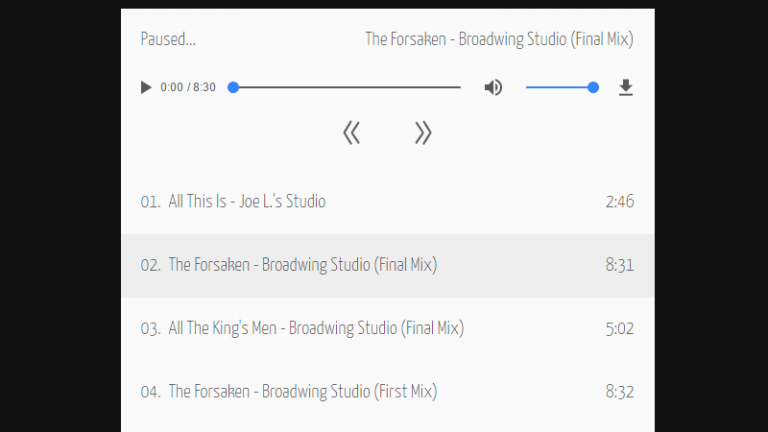

Var firstScriptTag = document.getElementsByTagName('script') į(tag, firstScriptTag) Var tag = document.createElement('script')
JQUERY MOBILE HTML5 VIDEO PLAYER CODE
This code loads the IFrame Player API code asynchronously. (and video player) will replace this tag. The numbered comments in the HTML are explained in the list below the example. The sample HTML page below creates an embedded player that will load a video, play it for six seconds, and then stop the playback.

Thus, this function might create the player objects that you want to display when the page loads. OnYouTubeIframeAPIReady – The API will call this function when the page has finished downloading the JavaScript for the player API, which enables you to then use the API on your page. We recommend 16:9 players be at least 480 pixels wide and 270 pixels tall.Īny web page that uses the IFrame API must also implement the following JavaScript function: If the player displays controls, it must be large enough to fully display the controls without shrinking the viewport below the minimum size. Most modern browsers support postMessage.Įmbedded players must have a viewport that is at least 200px by 200px. The user's browser must support the HTML5 postMessage feature. It also details the different JavaScript functions that you can call to control the video player as well as the player parameters you can use to further customize the player.
JQUERY MOBILE HTML5 VIDEO PLAYER HOW TO
It identifies the different types of events that the API can send and explains how to write event listeners to respond to those events. This guide explains how to use the IFrame API. You can also add event listeners that will execute in response to certain player events, such as a player state change. Using the API's JavaScript functions, you can queue videos for playback play, pause, or stop those videos adjust the player volume or retrieve information about the video being played. The IFrame player API lets you embed a YouTube video player on your website and control the player using JavaScript. Our task is to create a page that plays the video when a user lands on the page, so the complete code looks like this: Autoplay - This instructs the browser to begin playing the video as soon as the page loads. To instruct it not to preload, set the attribute to “none.”ĥ. To preload, simply include the attribute. Preload - Begins downloading the video as soon as the user hits the page. The spec allows for manipulation of methods and properties such as play(), pause(), currentTime, volume, muted and more.Ĥ. If you do want to customize the player controls, you can use JavaScript and CSS. This is useful if you don’t want to create your own custom control. Controls - Adds a default video control overlay.

Width and Height - (optional) Dimensions of the video.ģ. SRC - The location and name of the source video, it works the same as the src parameter for the tag.Ģ. Here are the essential parameters within the tag itself:ġ. But as with any HTML tag, you have a lot of options for parameters. Step 2: Take Control of Video Playback with ParametersĪs I said before, in HTML5, embedding video essentially comes down to using a single tag. You also need to convert your video with a video converter. Here’s a chart to make it easier to follow: Supported by: Firefox 4.0, Chrome 6.0, Opera 10.6. VP8 (WebM) – A newer standard recently acquired by Google and released as an open source, royalty-free (but still patented) format. Supported by: Firefox 3.5, Chrome 4, Opera 10.5.ģ. Ogg Theora – An open standard that is not patented and is royalty-free. However, this format is patented, and while it remains royalty-free for non-commercial use, it could potentially be expensive.Ģ. It's also the default recording format for many of the newer video and mobile devices on the market. H.264 – A popular format that can take advantage of hardware acceleration, and is supported by graphics chips in desktops and mobile devices. You currently have three possible options for encoding video:ġ. It also seems that the fractured implementation of HTML5 video will get worse before it gets better. Currently, each browser has its own preferred video format. Your biggest challenge with HTML5 video will be incorporating it in multiple codecs.


 0 kommentar(er)
0 kommentar(er)
